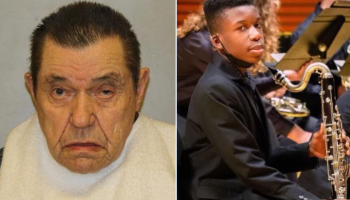
Source: Frazer Harrison / Getty
If you or someone you know is struggling with suicidal ideations and need someone to talk to, please click here for support.
Stephen “tWitch” Boss’ death by suicide is still being mourned one year after he unexpectedly took his own life on Dec. 13, 2022, at the relatively young age of 40.
But amid the grieving remains grim statistics about suicide that show Black people are among those with the highest rate of killing one’s self.
What happened?
Known for his dancing prowess and being the DJ on the “Ellen” daytime TV show, tWitch was found dead in a Los Angeles area motel from a self-inflicted gunshot wound.
A suicide note was reportedly found nearby but one year later the reason for tWitch killing himself has not been publicly revealed.
Family still in mourning
tWitch’s widow, Allison Holker, commemorated the life of her husband in an Instagram post over the weekend marking their wedding anniversary and expressing her conflicting emotions ahead of the anniversary of his suicide.
“We honor love by finding peace and gratitude in the memories of the ones that have transformed our souls forever,” Holker wrote in a post on Sunday. “On our anniversary I find myself in a space of tranquility embracing so many beautiful moments felt and experienced. With my whole heart I celebrate our love.”
https://www.instagram.com/p/C0sHUr5Pb75/?utm_source=ig_web_copy_link&igshid=MzRlODBiNWFlZA==
Suicide statistics among Black people
In decades past, data showed that Black people, in particular, had among the lowest suicide rates. However, once the COVID-19 pandemic hit, those statistics shifted significantly.
Data provided by the Suicide Prevention Resource Center shows that from 2010 to 2019 — the most recent years statistics were available for — Black people in the U.S. had a suicide rate of 7.4% per 100,000 people. That is compared to the overall rate of 13.2% per 100,000 people for everybody in the U.S.
Updated numbers provided by the Centers for Disease Control and Prevention (CDC) and published earlier this year found there was a 19% increase in suicides among Black people between 2018 and 2021. During that same period, the suicide rate for white people declined by nearly 4%.
The spike in suicides for Black people was across all age groups with a 5% rise in tWitch’s age group of 25-44 years old (22% overall). The increase was exponentially higher among young Black people aged 10-24 at more than 36%.
Black women have the highest rate
Seemingly lost in the discourse about suicide statistics along racial lines is how Black women have the highest suicide risk among all women, according to research conducted by Boston University.
A study published in October found that Black women were 20% more likely to attempt suicide than women from any other background.
Temitope Ogundare, MD, MPH, one of the study’s authors and a clinical instructor of psychiatry at Boston University’s Chobanian & Avedisian School of Medicine, said the data gleaned about Black women was unexpected.
“Our findings were surprising because most studies usually show that the rate of suicide was higher in white women in the U.S.,” Ogundare explained. “However, when we begin to look at the intersection of race and income, a different picture begins to emerge.”
Ogundare suggested a combination of domestic violence, lack of universal health coverage and racial discrimination has contributed to the rise of suicide risk among Black women.
A study published in March in the Journal of Racial and Ethnic Health Disparities found that “Hopelessness proved to be the most common reason that Black men considered suicide, and it was one of the most common reasons Black women consider suicide,” according to the study’s author Janelle R. Goodwill, Assistant Professor of Social Work, Policy and Practice at the University of Chicago.
“The Black young adult women in this study were more likely to seriously think about suicide because they could not live up to the expectations of other people and because they felt lonely and sad,” Goodwill added.
What the data tells us
Whether it’s due to mental illness, stress, feelings of hopelessness or any of the multiple other reasons why people attempt to die by suicide, it is something that affects folks from all walks of life and of all ages. However, the data shows that such behavior varies per age and race.
“Among Black populations, suicide rates peak during adolescence and young adulthood, then decline. This is a different pattern than is seen in the overall U.S. population, where suicide rates peak in midlife,” according to the Suicide Prevention Resource Center.
Counselor Yunetta Spring has emphasized self-care as an effective method for suicide prevention.
“When we look at suicide, we also are looking at mental health issues,” Spring said last year during an interview on the Rickey Smiley Morning Show. “We’re also looking at depression, and this can be triggered by several factors we have chemical imbalances, we have medical conditions, we have traumatic life events, and we have genetics. Some of us are predisposed for depression.”
Increasing opportunities and spaces for conversations about mental health and overall well-being can also help break through the negative perceptions some people have about mental health and suicide.
NewsOne has compiled a list of suicide prevention resources.
If you or someone you know is struggling with suicidal ideations and need someone to talk to, please click here for support.
SEE ALSO:
Hopelessness Is A Key Reason Some Black Young Adults Consider Suicide, Study Finds

























